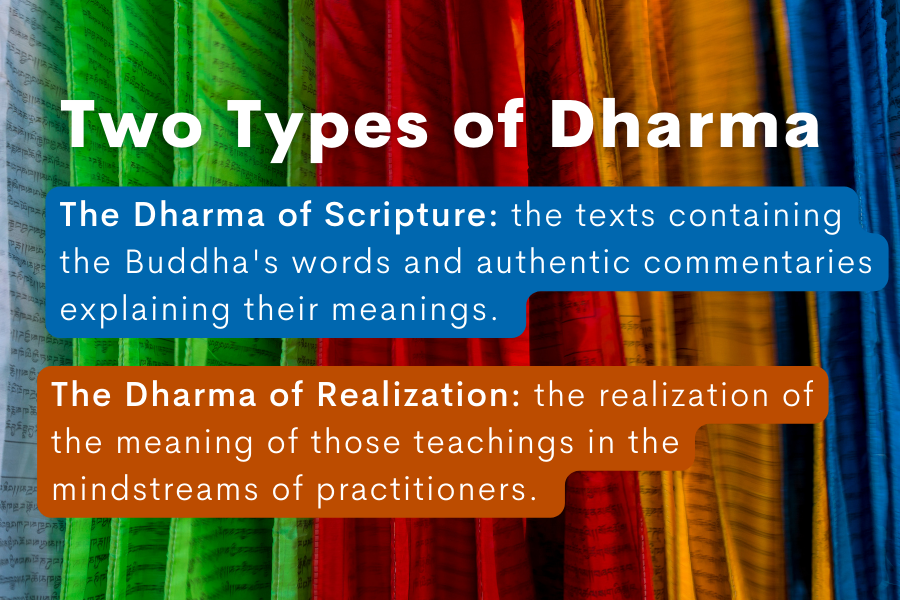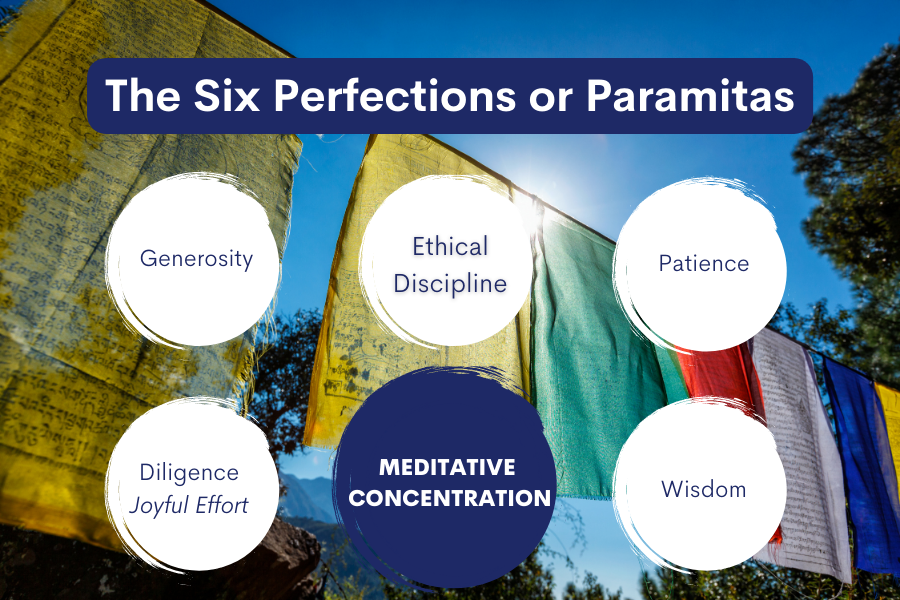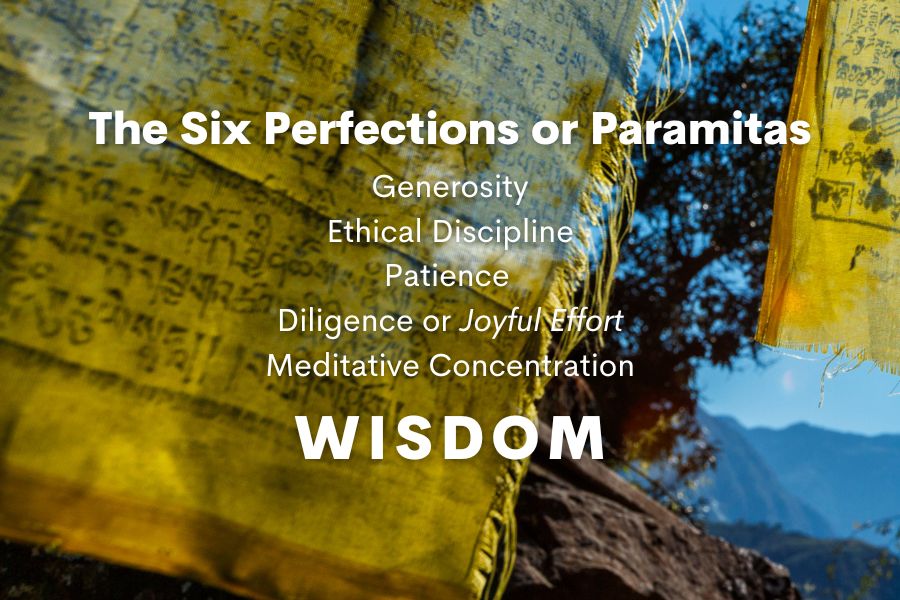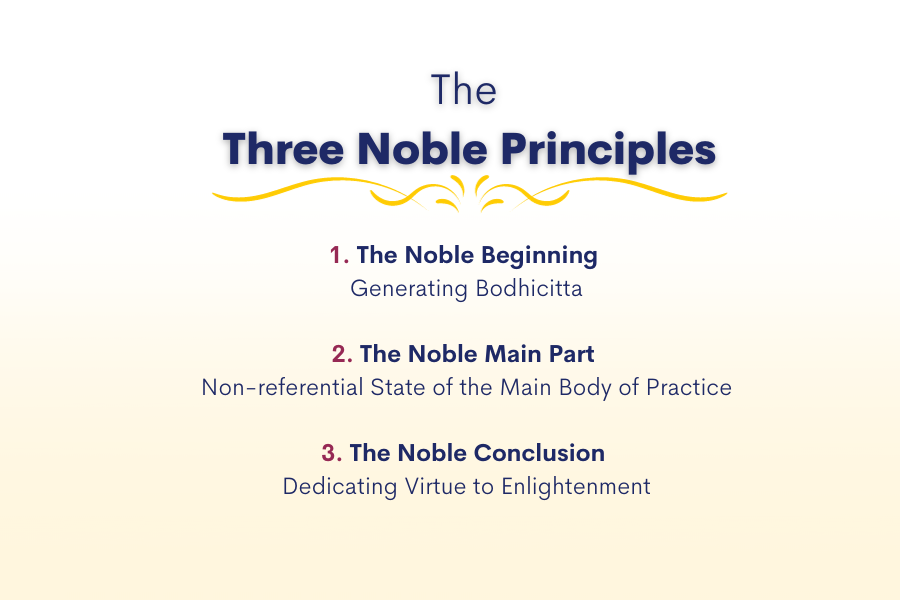As many of our students are moving deeper into the Dharma, we thought it pertinent to share some context and history about the Namchak lineage. The post The Ngöndro and the Tantric Path Explained appeared first on Namchak Tibetan...
Let’s start with reviewing the Three Paths or Yanas of Buddhism. Fortunately, the Buddha saw that we’re all different, with different capacities and styles, so he didn’t lay out one path to enlightenment. He laid out the Three Yanas, or vehicles, which are like the boughs of a tree. Mahayana and Theravada Buddhism became the two prevalent paths that spread throughout Asia. Vajrayana Buddhism is a subset of Mahayana. It was Vajrayana that Tibet adopted and practices to this day.
Each vehicle is styled for the different karma, needs, capacities, and proclivities of different beings. Usually, the karmic flow of a person’s life will lead them to the path best suited for them. In America, with its veritable smorgasbord of spiritual entrees, we need to feel our way through the tasting. If you find you respond best to one or another path or come to recognize your teacher from a particular path, that path is probably yours. Only you can know if you feel the rightness of it, for you.
The motivation of the Mahayana path is to free all beings from suffering. Bodhicitta, or the mind of enlightenment, is the primary cause of enlightenment in Mahayana. It is the wish to attain enlightenment to free all beings from suffering and to help as many as much as possible along the way. So, no matter which practices you may engage in, if you do them with the motivation of Bodhicitta, you are practicing a Mahayana path. In addition to the motivation of Bodhicitta, within Vajrayana, you use specific practices to work with afflictive emotions and eventually get underneath the poisonous aspect to the pure essence of each emotion.
Another way to say it is that rather than avoiding such challenges, as is generally done in Theravada, Vajrayana is about bringing everything onto the path—working with that very poison as a goad and catalyst to move you swiftly along the path to enlightenment. In the case of Mahayana, it’s less about avoiding or bringing onto the path and more about applying the antidote. For example, if you get bitten by a poisonous snake, you take an antidote.
How does the Namchak lineage fit into the Path?
The Namchak lineage belongs to the Vajrayana path. What is special about Namchak is that it is an intact lineage, and its world Lineage Holder, Tulku Sangak Rinpoche*, is our Spiritual Director. Namchak is a terma or revealed treasure lineage that finds its roots in Guru Rinpoche’s teachings that were concealed and later revealed by Namchak Tsasum Lingpa in the late 17th/early 18th century. Tulku Sangak Rinpoche’s family name is Namchak since they have been the custodians of the Namchak teachings for generations. Rinpoche and his brother Namchak Khen Rinpoche have been reciting and practicing the Namchak lineage practices since their youth in Tibet.
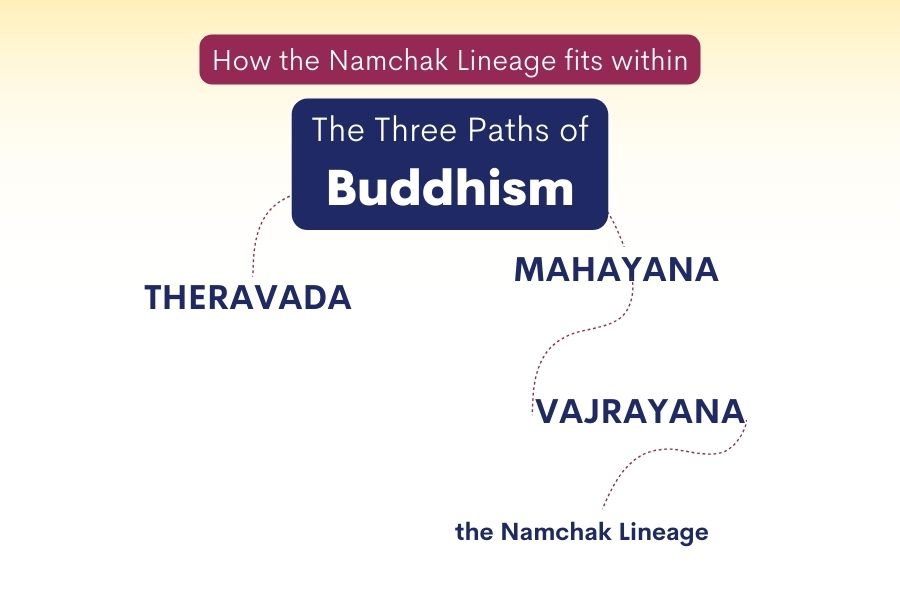
This lineage can meet students where they are and take them all the way to enlightenment. Here’s a summary of the steps:
Shamata, Vipassana
Ngöndro
Deity Practice
Dzogchen
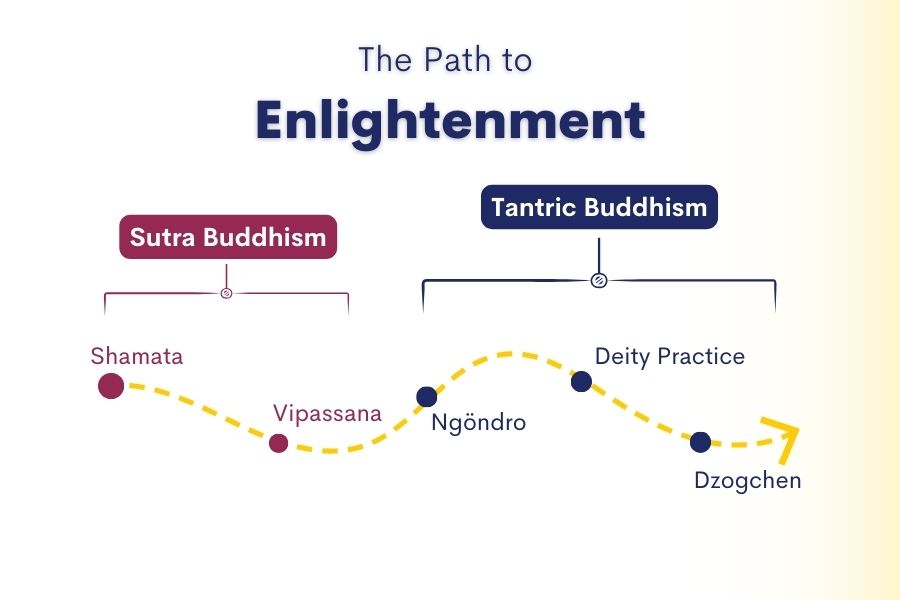
What is Sutra Buddhism?
The Buddha’s teachings can be divided into two categories: Sutra Buddhism and Tantric Buddhism. In the Sutra path, we are encouraged to meditate on the path of Calm Abiding (Shamata) and Profound Insight (Vipassana). Supported by the Six Perfections and following this path, it is said that it will take many, many lifetimes over the course of three incalculable eons to attain perfect enlightenment.
What is Tantric Buddhism?
Following the Tantric path stages of generation, completion, and Dzogchen, one can attain enlightenment in just a single lifetime. This is just one reason that, according to the Tibetan tradition, the Tantric path is superior to the Sutra path. However, this does not mean that the Sutra teachings are cast aside or looked down upon. We base our practice on a foundation of the outer discipline of Theravada, the supreme inner intention of the Mahayana, and the secret practices of Tantra.
What is the Ngöndro?
Ngöndro, or “Preliminary Practices,” takes you on a journey through six stages. Together, they make up the microcosm of the entire Vajrayana path. The Ngöndro contains the Common Outer Preliminaries and Uncommon Inner Preliminaries. The Common Outer Preliminaries are made up of four contemplations that turn your mind from Samsaric concerns by guiding you through a process of taking a thorough look at Samsara. We find that when we do, we become motivated to wake up OUT of Samsara!
Then we come to the Uncommon Inner Preliminaries, which are in five sections: 1) taking Refuge (the foundation of all Buddhist paths), 2) giving rise to Bodhicitta (the root of the Mahayana), 3) the meditation and mantra repetition of Vajrasattva (to purify misdeeds and obscurations), 4) Mandala offering (to gather the accumulation of merit), and 5) Guru Yoga (to swiftly bring the blessings of experience and realization).
The name “preliminaries” begs the question, “Preliminaries for what?” Generally speaking, we could say that they are preliminaries for the main practices of Tantric Buddhism and, more specifically, for Dzogchen–the Great Perfection. For many students of Tibetan Buddhism, Ngöndro is their first taste of Tantra.
In Vajrayana, after one has tamed and calmed their minds a bit with Shamata and Vipassana, they are ready to embark on the Ngöndro, spending many hours focusing on each of the abovementioned parts. Again, this is a microcosm of the entire Vajrayana path, so the hours spent can have a huge, transformative effect on our minds, hearts, and experiences of life.
Having gone through this transformative process, we are ready for stronger medicine. Next, we learn to embody different facets of the enlightened mind through deity practice. Then we work directly with our channels (nadis), subtle energies (prana), and thought droplets (bindu). Very strong medicine indeed!
What is Dzogchen?
Then, after all this complexity, we come to the utter simplicity of Dzogchen. It’s like we’ve been cleaning and polishing our windshield to see ourselves and reality more clearly … then we take the windshield away altogether. That is Dzogchen. What more could there be?
Dzogchen is a practice that one learns through a qualified lama. In this practice, the lama introduces the practitioner to the nature of their mind and guides them through the practice. Though there are many books about Dzogchen, it is something to be experienced personally. The only way to gain that experience is by training with a qualified lama and following their instructions step by step. Otherwise, you are likely to fall into the trap of practicing Dzogchen in word only while still experiencing a level of mind that is quite ordinary.
All of this is merely an introduction to the stages of this path. We strongly recommend that the students of this path travel with a qualified guide or lama. A lama performs several functions similar to those of a typical minister and serves as a teacher and guide for students on the Vajrayana path. Qualified lamas are well-trained and accomplished in the practices. They know the theoretical foundation, have sufficiently worked on themselves so that their own Buddha Nature is evident, and proceed from pure motives.
You may be interested in our Ancient Wisdom Engaged (AWE) program if you feel called to this path. Students in this program receive teachings from Namchak Khen Rinpoche, Lama Tsomo, and Justin Kirkwood.
**Sometimes spelled “Sang-Ngag”
The post The Ngöndro and the Tantric Path Explained appeared first on Namchak Tibetan Buddhist Practice & Retreat.



